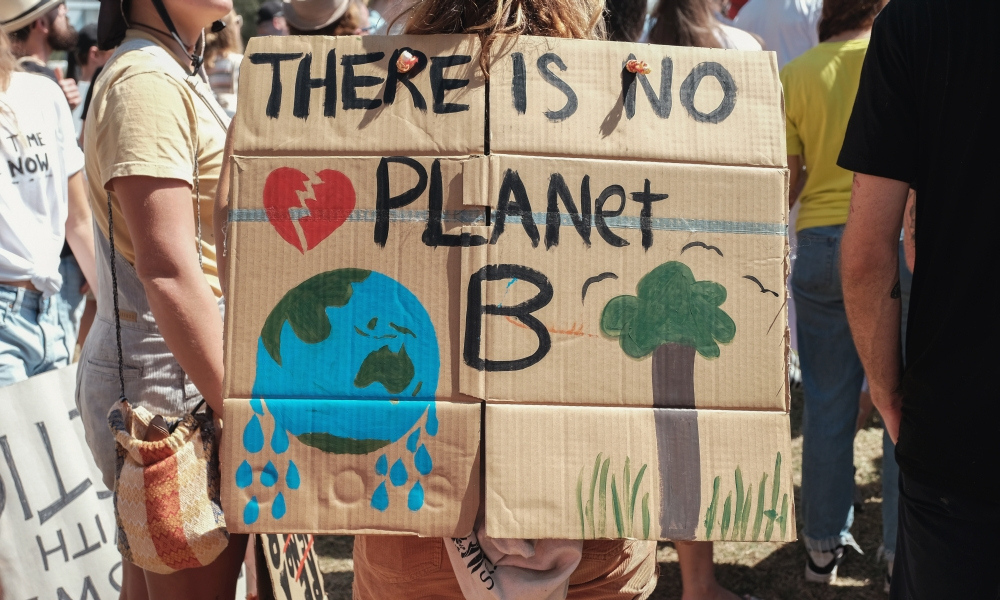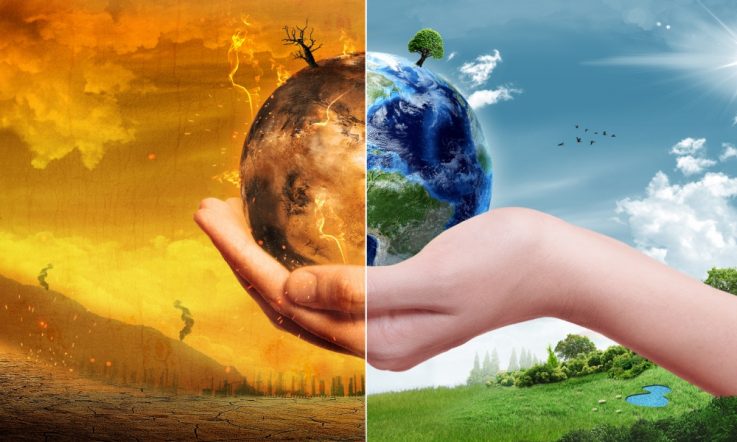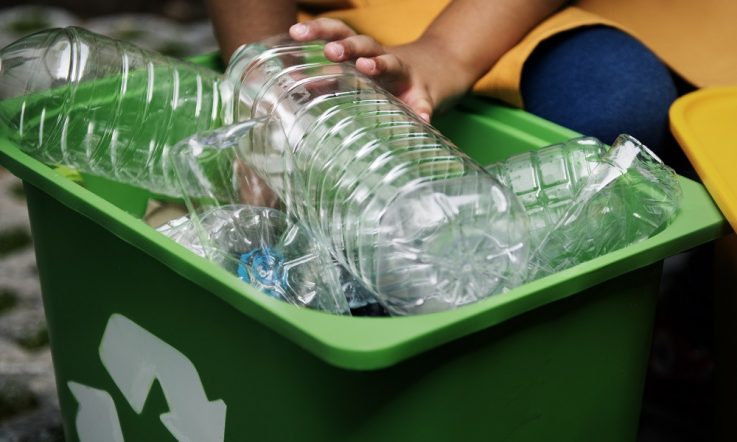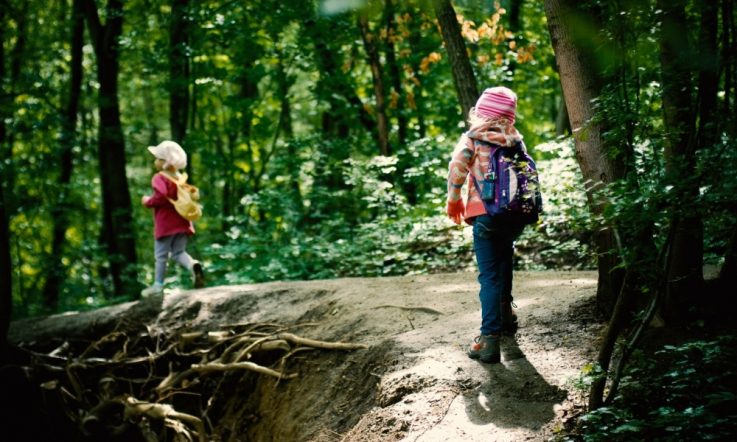The children and young people of today are growing up in uncertain times as the effects of global climate change begin to permeate their everyday lives and communities. At the same time, these young people are often positioned as the next generation of leaders who will potentially overcome the legacies of climate and environmental inaction.
Professor Amy Cutter-Mackenzie-Knowles, Dean and Head of School in the School of Education at Southern Cross University, joins Teacher to discuss her research in this area. She's been working with her co-researcher, Dr David Rousell from Manchester Metropolitan University, on a government funded project called Climate Change + Me, which has involved working with Northern New South Wales young people as co-researchers in understanding young people's climate change perspectives. The researchers have also written a systematic review of climate change education, focusing specifically on giving children and young people a ‘voice' and a ‘hand' in redressing climate change.
Q: To begin, I'd like to ask you specifically about the Climate Change + Me project. Could you tell me a little bit about it? So what is it? Who is involved? And why was it established?
A: It commenced in 2014. It was established because at the time very little research had been undertaken about young people's climate change perspectives from the ‘perspective' of children and young people. Research was about them rather than with or by them. This is coupled with the fact that climate change education (for children and young people) has tended to be, designed and implemented by adults, rather than genuinely involve children and young people as curriculum co-designers. So the Climate Change + Me program was really about trying to understand children and young peoples' voices in climate change where 135 children and young people were co-researchers, but then taking it a step further and working with young people in co-designing and co-implementing curriculum in climate change education.
Q: You co-authored a systematic review of climate change education with Dr David Rousell that explored giving children and young people a voice and a hand in redressing climate change. What were your aims for this review?
A: In any research project it's important to undertake an extensive review of the literature. Being such an emerging area in research, we wanted to get a real sense of what has actually been published and written in this space, particularly where there's a focus on children and young people in climate change education. And we identified that there were 220 publications, which worldwide, is actually not that high, but it gives you a bit of a sense of the scale of research in this space.
Q: The paper examined existing climate change education research published between 1993 and 2014, with a specific focus on the relevance of this research to children and young people, and I found it really interesting too that it wasn't just Australian research, it was from a global perspective. Could you give me a sense of what climate change education looked like during this period?
A: Well, it's interesting. Climate change education programs tended to focus on building up children and young people's knowledge of climate change. In that regard the bulk of existing research studies have focused on determining children and young people's content knowledge (what they knew about it). Interestingly, what our broader research in this space has shown is that yes it's important that they do have some understanding of climate change science, but what we know is that that understanding alone will not lead to any kind of action or behaviour change in climate change.
Our systematic review revealed that many existing research studies portrayed young people's knowledge as limited, erroneous and highly influenced by the media. That research however has been done ‘on' children mostly via survey research, rather than in collaboration with young people as co-researchers. What our research has shown is that young people do have a fairly wide breadth of knowledge in climate change science and climate change education but they're very frustrated, which you can see now through all of the climate change activism happening by young people.
Q: Children and young people are confronted with vision of the impacts of climate change – particularly through the internet and social media and the news. And, in fact, your review cites a large-scale Australian study from 2007 that found 25 per cent of children are afraid that the world would end within their lifetime. It's understandable then, that children today have really legitimate concerns about the environment and the effects of climate change, isn't it?
A: And we've found too in previous studies that that fear certainly exists, but when you look at broader research around children's most common fears generally … their top five most common fears: first, the death of their parents; second, some sort of catastrophic event (war/nuclear related but also environmental); and then the next three are spiders, snakes and illness. And what that shows is that they've got general fears around the environment itself (a fear of ecology), but also there's this emerging fear as well around these climate change disaster events.
Q: A lot of the discussion positions young people as the future leaders who will inherit this climate crisis that we're talking about, but it also assumes that they will have solutions to overcome it. Despite this, you found that children currently have limited opportunities to express their understandings and concerns about climate change within their communities. Could you tell me a little bit more about that?
A: Sure, so as I was saying at the very start, a lot of the research and education in this space tends to be designed by adults. So that's been a significant problem, which is why you've got young people like Greta Thunburg and others who are really taking much more drastic action because they don't want programs that are simply focused on how the climate basically works. They know these things and taking such an approach is grossly inadequate. They want a far more active, driven education. So in that sense there's a bit of a mismatch between what they want and then what is actually available.
Q: On a school level, have you seen any examples of children positioned as the actual researchers?
A: I think it's certainly growing across the world but perhaps not as much as people would think. My experience though is that schools and early childhood centres absolutely jump at the chance, in extending opportunities to children and young people to be co-researchers on university research projects. It's important to appreciate that schools and early childhood centre do research everyday as part of their practice. It just might not necessarily be called a university research project or considered research in a formalised sense. But what my team and I have been really focussing on is formalising it, so working with teachers, working with young people, in not only understanding their voices in climate change but coming at the curriculum as co-designers so that children and people have a say in their climate change education. In essence we provide a platform for this type of work.
Q: Let's talk about creativity now. Did you uncover any emerging trends in the literature that could inform a creative and participatory approach to this education?
A: When we came to the Climate Change + Me project, we had in mind a child framed participatory research methodology, so that's where the children are co-researchers in collaboration with us (as university researchers). And that process involved training them as researchers and philosophers, because you can't do research without philosophy. It has to have underpinning theories so we were experimenting with philosophies of thought in the broader context of the Anthropocene. Methodologically we came at it through an approach called ‘visual ethnography', and so we gave the children and young people iPads and research journals to assist with their research. With those tools, they experimented creatively taking their research far beyond traditional realms. While some children carried out ethnographic interviews and observations with other children and young people, they also produced video installations, visual essays and photomontages (just to name a few).
But then they took it further again where they wanted to, with their photos, not simply just have these stagnant type photos, they used beeswax which is an encaustic, and traditional archival technique from the Egyptian times. They encausted thousands of images to exhibit at their exhibition (called the Changes) which was another key phase of the project. Back to the actual technique though. The Egyptians used an encaustic method using beeswax to record visual images. It retains the image for thousands and thousands of years. And so the reason the co-researchers applied this technique was because they wanted their research to be long lasting. They were connecting this to the history of the Earth noting that the planet is 4.5 billion years old. And because we were conducting this project in the context of the Anthropocene which is the current geological era that we're in – they wanted their research to speak to the concept of deep time – meaning the deep time of the Earth and the universe.
As I mentioned earlier, existing research has tended to focus on how little children and young people know, rather than what they do know as it concerns climate change. And I think that's been highly problematic in the research, in taking that approach, because it doesn't actually progress the field of climate change education let alone climate change action. It simply results in researchers recommending that children need to know more, but as I mentioned earlier – a content-only approach is entirely ineffective in changing behaviour. The works of Anja Kollmuss and Julian Agyeman has been ground-breaking in that regard revealing the complexity of environmental behaviour change and how knowledge/values/action don't and can't work in isolation.
Q: And another thing I took from reading your work was your call for new ways of making climate change meaningful for young people through arts-based modes of engagement. I'm wondering from a teachers' perspective though, what would this creative approach look like in practice?
A: Essentially a creative approach, in climate change education, is where you're empowering children and young people applying Arts-based methods. That might be where they're capturing other children and young people's voices through video/photography/drawing because we know when you really focus on trying to understand your own/other beliefs, values, knowledge and actions, then that's how you can develop deeper understandings and potentially make shifts in your own behaviour or thinking. In another project I've been doing with Associate Professor Lexi Lasczik we've been mapping the Gondwana with children and people (as co-researchers). We've been applying scientific mapping techniques, but also artistic and Indigenous mapping techniques. My point is that creativity cuts through boundaries in practice and thought. Creativity doesn't operate in a vacuum – it operates across/through disciplines such that it is transdisciplinary. It opens up other modes of engagement for young people where they can essentially understand and express themselves, and in an area such as climate change education that is vitally important.
Q: And so just finally, in your view then, how could educators seize this learning moment and use children's attitudes to position them as those active researchers, with the potential for significant social and political impact?
A: I think the way that they can do that is to provide a platform for children and young people and one of the ways that that platform can be provided is through collaborating, with universities or other industries. Or even working within the school itself and then branching out into the community. My point is that children need to know that what they're doing is real, that it's going beyond the school gate.
So let's say that they are doing a unit of work on climate change, I would strongly recommend that children are empowered to do their own research on their own positionings in climate change alongside scientific research in understanding how climate change works. As I've mentioned, we know from research that it's not until you really understand your own positionings that shifts can start to happen leading to deeper understandings. So I would suggest commencing there. Commencing at that personal level while also working to understand climate change scientifically, but then working outwards where you're creating that platform for children to genuinely have a voice and collaborate with places like universities in progressing climate change education.
References
Rousell, D., & Cutter-Mackenzie-Knowles, A. (2019). A systematic review of climate change education: giving children and young people a ‘voice' and a ‘hand' in redressing climate change. Children's Geographies, 1-18.
Do you teach climate change education in your classroom? How do you ensure that students are given a voice to express their ideas about this topic?
Professor Amy Cutter-Mackenzie-Knowles discusses a creative approach to climate change education. Thinking about your own context: Are any of these strategies something you could try with your students? What opportunities exist to collaborate with experts beyond the school gates?



